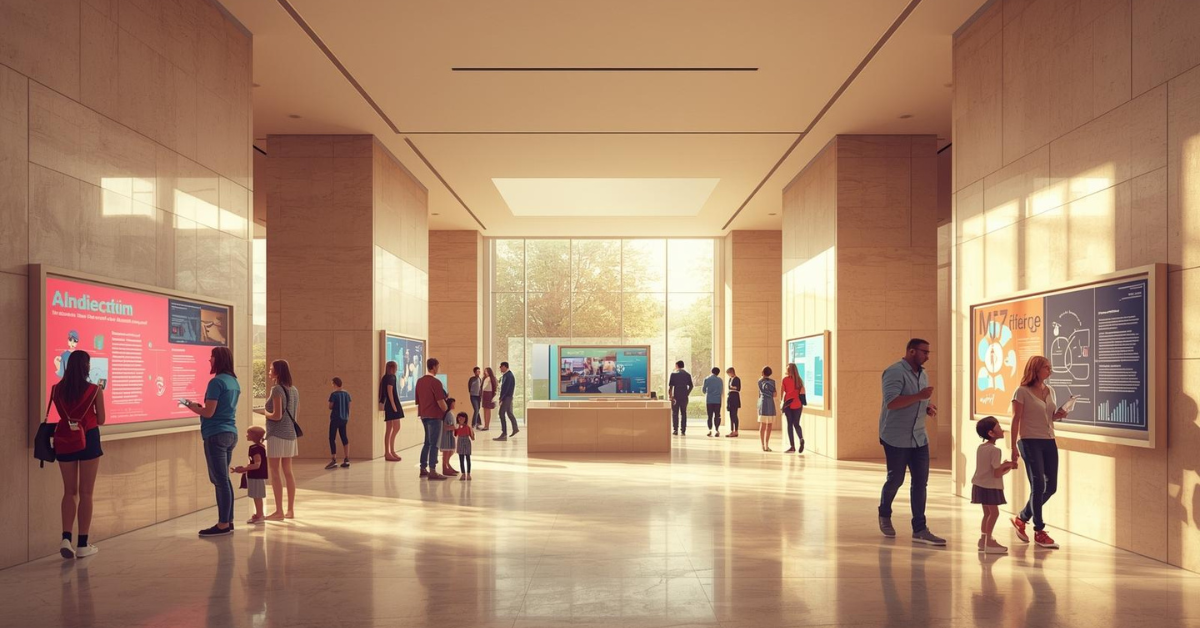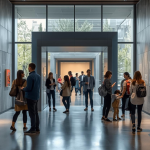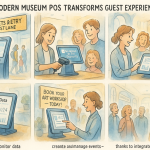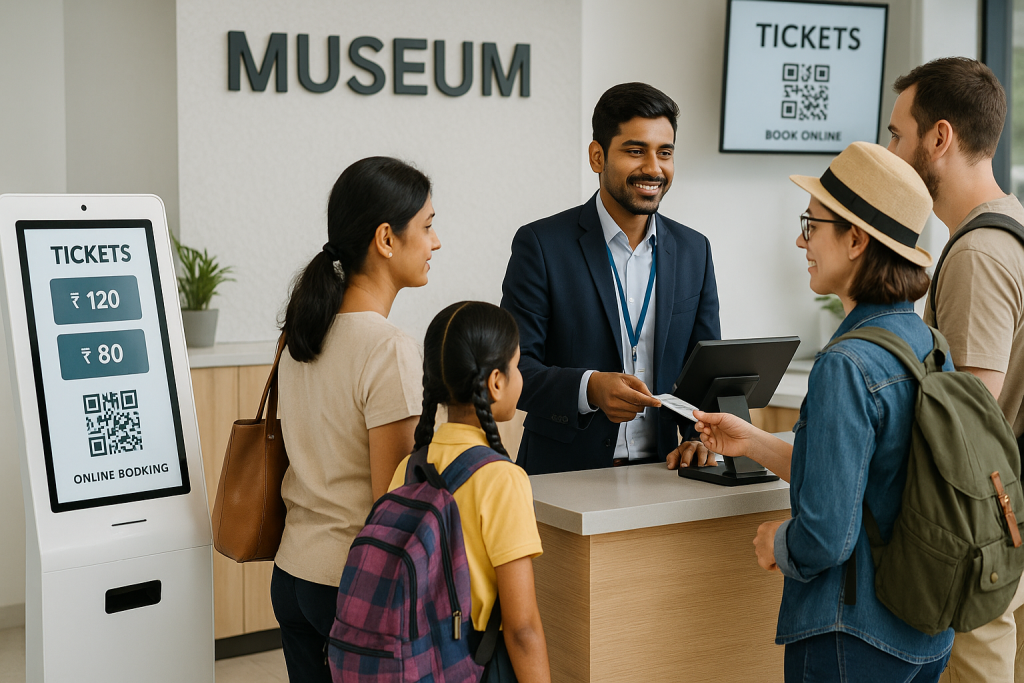Museums can become more visitor-centered by designing experiences and programs focused on individual needs, preferences, and feedback. The global museum tourism market is projected to surge from $31.3 billion in 2025 to nearly $93 billion by 2035, driven by a high CAGR of 11.5% as institutions shift from passive cultural sites to dynamic, visitor-focused destinations.
Adopting personalization and user-friendly experience design transforms how museums engage with visitors resulting in higher satisfaction and stronger community connections. Here’s how your museum can shift from a collection-centered approach to a truly visitor-centered one, and how EveryTicket empowers this transformation through advanced data, personalization, and actionable insights.
Why Should Museums Prioritize Visitors?
Focusing on visitors means understanding what they value about the museum experience and acting on those insights. Museum directors and curators often face visitor dissatisfaction due to programs that don’t match changing expectations or interests. Switching to a visitor-centered approach builds lasting loyalty, boosts engagement, and ensures programming remains relevant and impactful for diverse audiences.
What Does “Visitor-Centered Museum” Mean?
A visitor-centered museum is one that organizes exhibits, programs, and services around the needs, interests, and feedback of its visitors. This doesn’t mean ignoring collections or mission, it means balancing expertise with empathy, so the experience feels welcoming and personalized.
Key traits of visitor-centered museums:
- Listening to visitor feedback for ongoing improvement
- Offering flexible, adaptive programming
- Designing spaces and content for accessibility and engagement
- Using technology to personalize experiences
How Does Personalization Improve the Museum Experience?
Personalization builds connections between visitors and museums by tailoring experiences:
- Personalized tour options addressing interests (e.g., family-friendly, expert-level, thematic routes)
- Digital guides that adapt to visitor age and preferences
- Customized events or workshops based on group profiles
Statistics show museums implementing personalization see visitor satisfaction ratings rise by 15–20%, and repeat visits increase substantially over two seasons.
What is Experience Design and Why Does It Matter?
Experience design in museums translates into curating journeys that feel intentional, intuitive, and enjoyable from entrance to exit. Museums using principles from experience design:
- Reduce bottlenecks and confusion in physical spaces
- Guide visitors with clear wayfinding and information
- Offer seamless transitions between exhibits, activities, and amenities
When visitors feel the museum “anticipates their needs,” survey data shows satisfaction doubles, and time spent onsite increases 30–40%.
What Common Pain Points Are Facing Museums Today?
Directors and curators often report:
- Low visitor engagement with static programming
- Negative feedback about exhibit relevance or presentation
- Difficulty attracting diverse demographics
A visitor-centered approach addresses these by:
- Designing programs with visitor input
- Regularly updating exhibits for contemporary relevance
- Offering feedback opportunities and acting on analysis
How Can Museums Gather Actionable Visitor Data?
Museums need structured tools for feedback collection and behavioral analytics:
- Use visitor surveys integrated with e-ticketing platforms like EveryTicket
- Monitor journey patterns to pinpoint popular exhibits and drop-off points
- Leverage social media sentiment and onsite comment stations for real-time insights
Running quick, targeted feedback campaigns ensures programs stay aligned with what actual visitors want—not solely curator assumptions.
How Does EveryTicket Support Visitor-Centered Transformation?
EveryTicket enables museums to improve experience design and personalization in these direct ways:
- Advanced e-ticketing captures visitor preferences, track attendance, and analyze trends
- Integrated surveys at key touchpoints gather qualitative and quantitative data
- Dynamic visitor profiles unlock personalized tour suggestions and events
- Automated feedback analysis provides instant recommendations for program improvements
By connecting data from EveryTicket, directors receive actionable reports showing which programs resonate, what features drive repeat attendance, and where experience bottlenecks occur.
What Are the Benefits for Museum Leaders?
Leaders that pivot to visitor-centered operations see measurable improvements:
- Program relevance increases, reflected in satisfaction ratings (avg. 4.5/5 for personalized events)
- Operational efficiency rises, with better allocation of staffing and resources
- Strategic updates to programming supported by hard data—not guesswork
Curators and directors gain confidence in decision making, knowing choices are backed by evidence and real visitor input.
How Can Museums Implement a Visitor-Centered Strategy?
- Start with Clear Definitions: Identify what “visitor-centered” means for your museum.
- Gather and Analyze Data: Deploy EveryTicket for real-time feedback and analytics.
- Personalize Experiences: Offer choice, adapt to visitor interest, and surface relevant content dynamically.
- Iterate Continuously: Use feedback loops to refine programs and spaces.
- Train Staff: Equip teams to prioritize visitor needs over institutional habits.
What Program Examples Show Success?
- A mid-sized science museum used EveryTicket for ticketed family workshops, adjusting scheduling based on in-app visitor feedback, resulting in a 35% increase in family attendance.
- A contemporary art gallery personalized event invitations using visitor interest data—leading to a 27% rise in first-time guests returning for more than two events per year.
How Does Personalization Address Visitor Dissatisfaction?
Personalization tackles dissatisfaction by:
- Providing flexible choices (exhibit times, tour types)
- Ensuring accessibility (custom digital guides, multi-language support)
- Responding directly to feedback with tangible adjustments
Satisfied visitors post more positive reviews and engage further with the institution beyond a single visit.
What Role Does Experience Design Play in Meeting Visitor Needs?
Experience design closes the gap between expectation and reality:
- Streamlining check-in and event registration with EveryTicket
- Optimizing exhibit flow with intuitive signage and friendly staff guidance
- Enhancing amenities (cafes, retail, restrooms) based on visitor routines
A recent survey of 600+ museum attendees cited “ease of navigation” and “staff responsiveness” as top factors for a positive experience.
Museum Visitor-Centered Approach
| Element | Traditional Museum | Visitor-Centered Museum |
|---|---|---|
| Focus | Collections, curatorial vision | Visitor interests, feedback, active engagement |
| Programming | Static, pre-defined | Dynamic, adaptive, audience-driven |
| Feedback Loop | Annual survey, informal | Real-time, digital, actionable |
| Personalization | Not offered | Deep experience personalization via data |
| Technology Use | Minimal | E-ticketing, analytics, instant recommendations |
What Features Should Museum Directors Prioritize in Experience Design?
- Multiple ways for visitors to provide feedback
- Personalization options for tours, content, and amenities
- Transparent communication of improvements made based on visitor input
- Integration of EveryTicket for unified digital tracking and analysis
Director’s Checklist: What Quick Wins Should Museum Leaders Prioritize for Visitor-Centered Design?
Visitor-centered transformation does not have to start with a capital project. Directors can unlock fast wins by improving feedback loops, simplifying the journey, and using tools like EveryTicket to turn basic visitor data into better programming decisions.
Quick Wins You Can Implement This Quarter
1. Make Feedback Effortless at Every Touchpoint
- Add a two-question pulse survey to your digital tickets and post-visit emails via EveryTicket.
- Place a simple “How was your visit today?” QR code at exits to capture quick ratings and comments.
2. Map and Fix the Most Frustrating Moments
- Walk the full visitor journey—from website to ticketing to exit—as if you were a first-time guest.
- Remove one friction point per month (confusing signage, unclear entry, long queues) and announce visible improvements to visitors.
3. Offer Simple, Visible Personalization Choices
- Create 2–3 labeled routes such as “Family Highlights,” “First-Time Essentials,” and “Deep Dive for Enthusiasts.”
- Use EveryTicket confirmation pages to suggest the most relevant route or event based on visit type and time.
4. Turn Ticketing Data into Programming Insights
- Review attendance by time of day, ticket type, and segment to spot underused slots or oversubscribed programs.
- Reallocate staff and schedule more high-demand tours or workshops, then test one new time slot per month.
5. Launch One Visitor-Led Pilot Program
- Use recent feedback to design a small, clearly labeled “Designed with Visitors” tour, workshop, or family activity.
- Promote it as a limited pilot and collect targeted feedback inside EveryTicket for rapid iteration.
6. Improve Wayfinding and Onsite Clarity
- Audit entry, cloakroom, restrooms, and café visibility; add or update the top five signs that matter most for comfort.
- Add a simple digital or printed “Start Here” map highlighting must-see stops for different visit durations (30, 60, 90 minutes).
7. Close the Loop and Communicate Changes
- Add a short “You asked, we changed” section on your website or lobby screen.
- Highlight 3–5 concrete improvements made directly in response to visitor feedback gathered through EveryTicket.
Quick-Win Prioritization
| Priority Level | Quick Win | Timeframe |
|---|---|---|
| High | Add pulse surveys to tickets and exit points | 1–2 weeks |
| High | Fix top wayfinding and signage issues | 2–4 weeks |
| Medium | Launch labeled visitor routes (e.g., families) | 4–6 weeks |
| Medium | Adjust staffing based on ticketing data insights | 4–8 weeks |
| Low | Pilot a “Designed with Visitors” program | 6–10 weeks |
Wrap-up!
To truly become a visitor-centered museum, combine ongoing data-driven personalization, experience design, and transparent feedback processes. EveryTicket empowers directors and curators to confidently design programs around the visitors they want to engage making museums not just places of learning, but thriving community destinations.
Fill the inquiry form to book a free demo with us.
FAQs
1. How can directors prove ROI on visitor-centered approaches?
Use EveryTicket’s analytics to show increased attendance, higher satisfaction ratings, and more repeat visits after implementing personalized programming.
2. What’s the first step in shifting to visitor-centered operations?
Start gathering structured feedback from visitors. EveryTicket offers automated survey integration to jumpstart this process.
3. Is it costly or disruptive?
Implementing visitor-centered changes can be gradual and low-risk if you use scalable platforms like EveryTicket—most updates are iterative and based on specific visitor needs.



